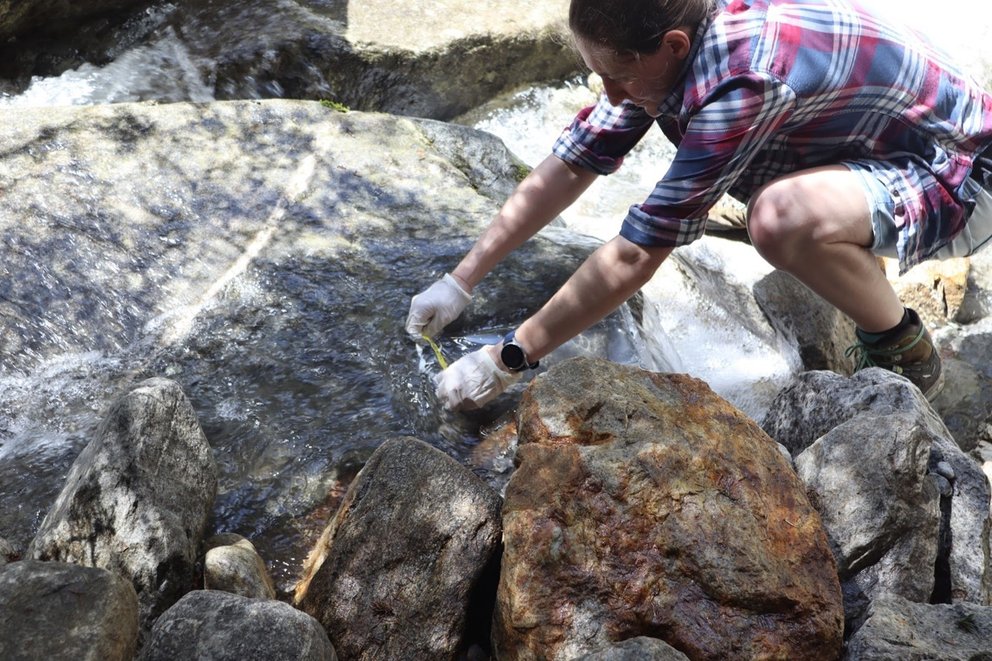
The DNA of forests
Biodiversity assessment via eDNA

Background
Forests provide a diverse habitat for numerous animal, plant and fungi speclies and therefore play an important role in the preservation of biodiversity. However, it is precisely this diversity of habitats and species that usually makes it difficult to record in concrete terms. Monitoring the biodiversity of forests is therefore often a great challenge. It is particularly difficult when it comes to mountain forests, which are often difficult to access. A comprehensive and standardised recording of biodiversity seems to be almost impossible due to the enormous time and personnel expenditure that conventional methods entail.
This problem can be solved with the innovative approach of recording biodiversity using environmental DNA (eDNA). This is the genetic material in cells that living organisms constantly release into their environment in small quantities (e.g. in the form of faeces, tissue remnants, but also seeds, pollen or spores). This eDNA can be traced and the different species identified by the "DNA fingerprint" they leave in their environment. The watercourses that run through the forests collect this DNA information, as they are used not only by aquatic species but also by terrestrial species, or are constantly carried in by rainwater or wind. By means of molecular analysis of water samples, this information can be read out (DNA metabarcoding). For the first time, the detection of species on the basis of DNA traces offers the potential to comprehensively and standardised record the biodiversity of forests even in inadequate areas with comparatively low personnel and material costs.
Pilotstudy in Tyrol
This is precisely the starting point for the project launched in May 2022. We are investigating how suitable the method of eDNA monitoring is for recording the diversity of organisms in these habitats using samples from flowing waters in forests. One of the forest areas investigated in this model study is in the Gunggl in the Zillertal Nature Park and the other is the Taschbach Valley in the Karwendel Nature Park.
The present model project investigates what needs to be taken into account in order to obtain an optimal representation of the biodiversity of the mountain forests in the catchment area of the water bodies, using these two areas as examples. For example, the length of the distance over which DNA signals are transported by the water depends on a variety of factors, such as the amount of DNA that was released, but also the strength of the current or the transport of bedload in the stream. It is planned to take monthly water samples from May to October 2022 and in spring 2023. 2-5 litres of water will be taken from each sample point along the main stream and the individual tributaries; in the case of larger water bodies, these will be mixed samples of water from several points in the same section. These are filtered on site and the filters are taken to the Institute of Zoology in Innsbruck for further analysis. Based on the results, it can then be determined up to which order the water bodies must be sampled in order to obtain as representative a picture as possible of the biodiversity of the corresponding forest area. To this end, comparisons with existing data on biodiversity (e.g. from TIRIS or previous mapping in the areas and the like) are also sought. The aim is to find out how to obtain the maximum amount of information on species occurrence in the area with the smallest possible number of samples.
For this project, 500 samples from the two areas will be analysed to characterise the biodiversity. Based on the DNA traces from the filters, the species spectrum in terms of plants, animals and fungi will be analysed using DNA metabarcoding without having to see or even capture an individual. For this purpose, the DNA sections found in the samples are amplified in a PCR analysis, read and compared with reference databases so that they can be assigned to the species deposited there and thus identified.
It is very important to have a comprehensive picture of the species population in order to be able to make concrete statements about the ecological condition of a forest area. Based on this information, targeted strategies can be developed to promote the occurrence of individual species but also the entire diversity in general. Furthermore, these methods also offer the possibility to check the success of the implementation of measures. This new form of monitoring will make a fundamental contribution to the recording and thus also the conservation and management of forest biodiversity, as it generates taxonomically broad and high-resolution, standardisable and verifiable biodiversity data for the first time. If the present project is successfully implemented, a nationwide monitoring of forest biodiversity can be established and an essential knowledge base for management and conservation measures can be created.
ATE members involved in the Waldprojekt:
Michael Traugott (PI), Corinna Wallinger, Daniela Sint
Bettina Thalinger
Yannick Pütz, Julia Wagner, Daniel Lanbach
Das Projekt wird aus Mitteln des Waldfonds Österreich vom Bundesministerium für Landwirtschaft, Regionen und Tourismus finanziert.

